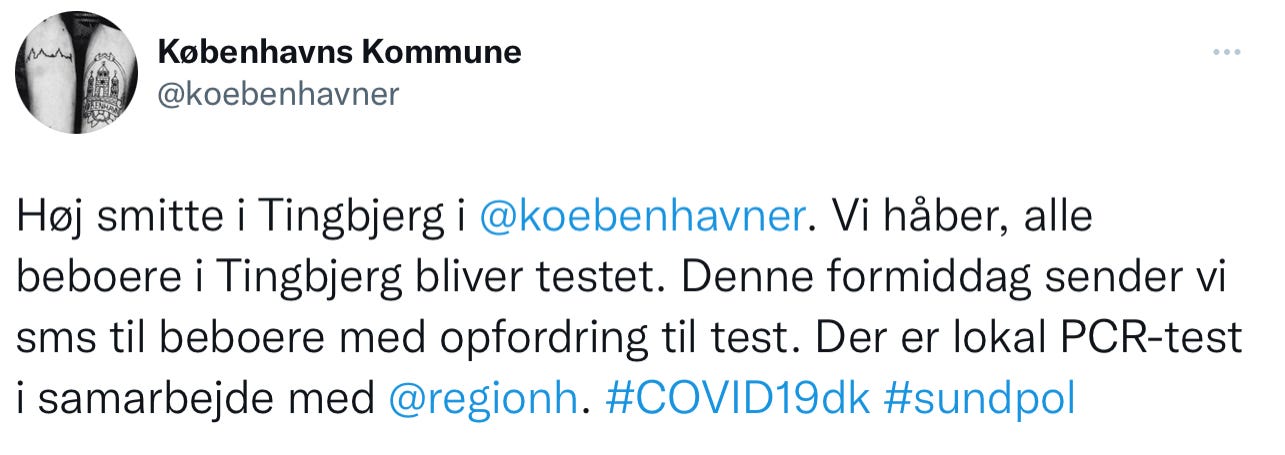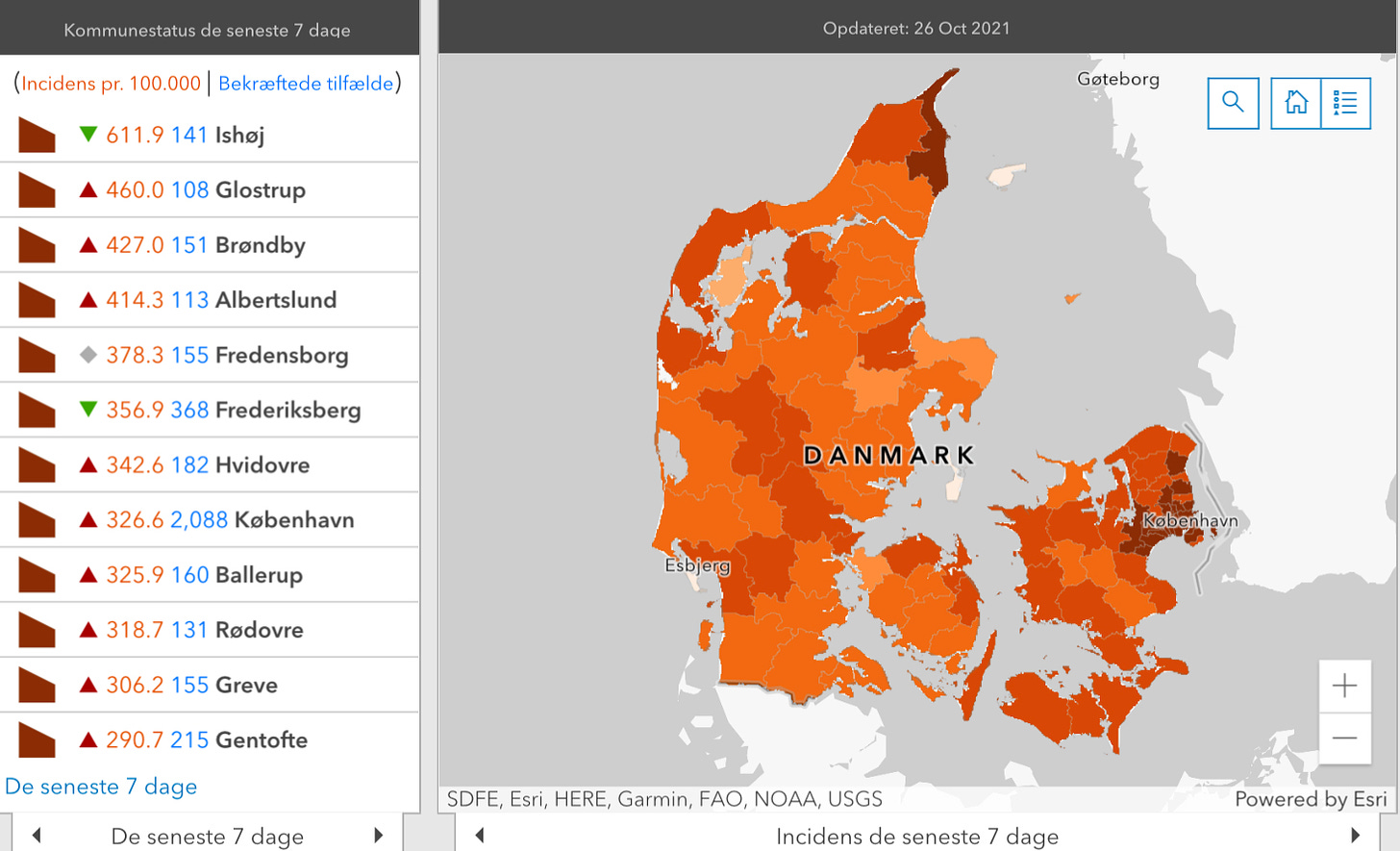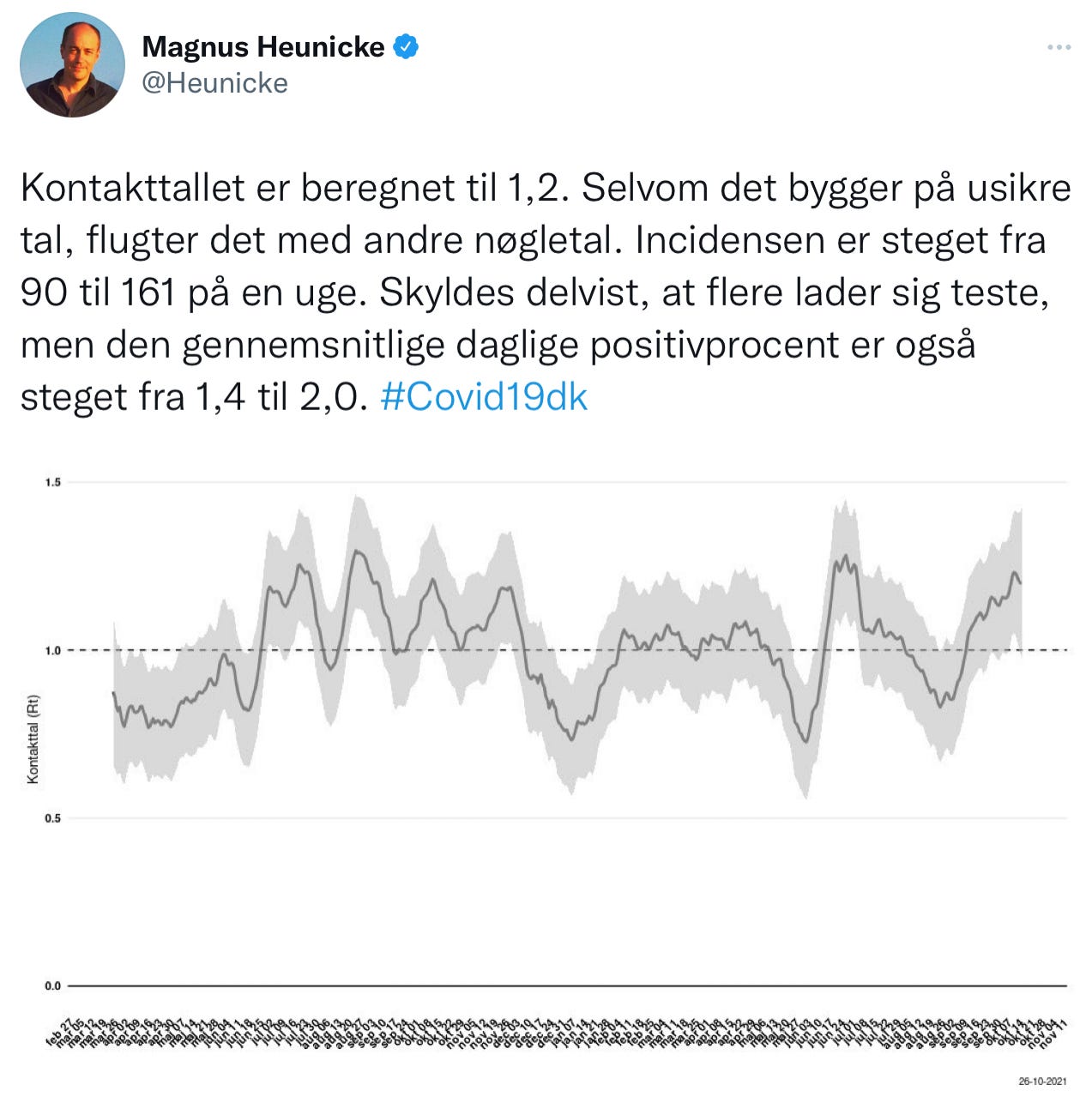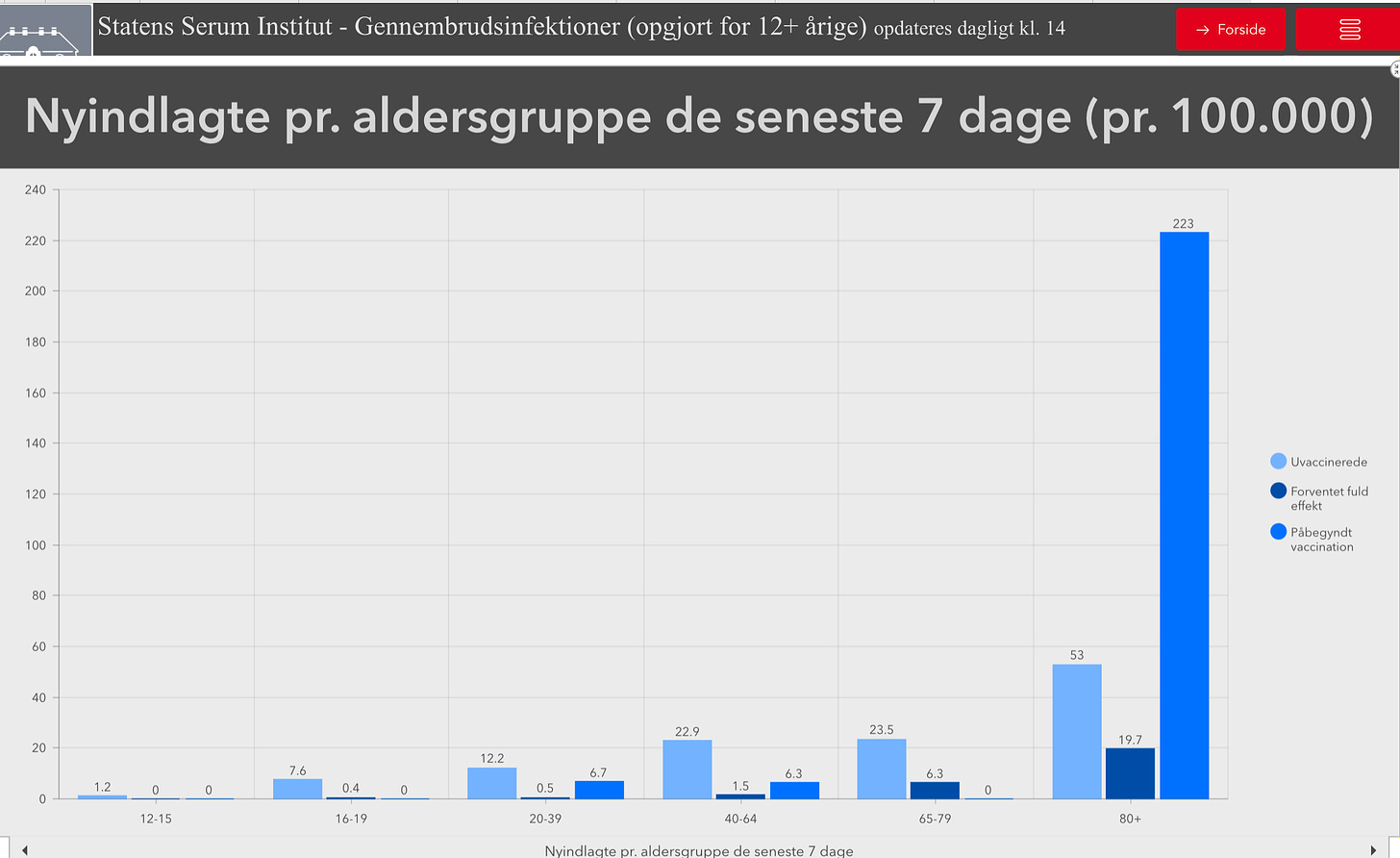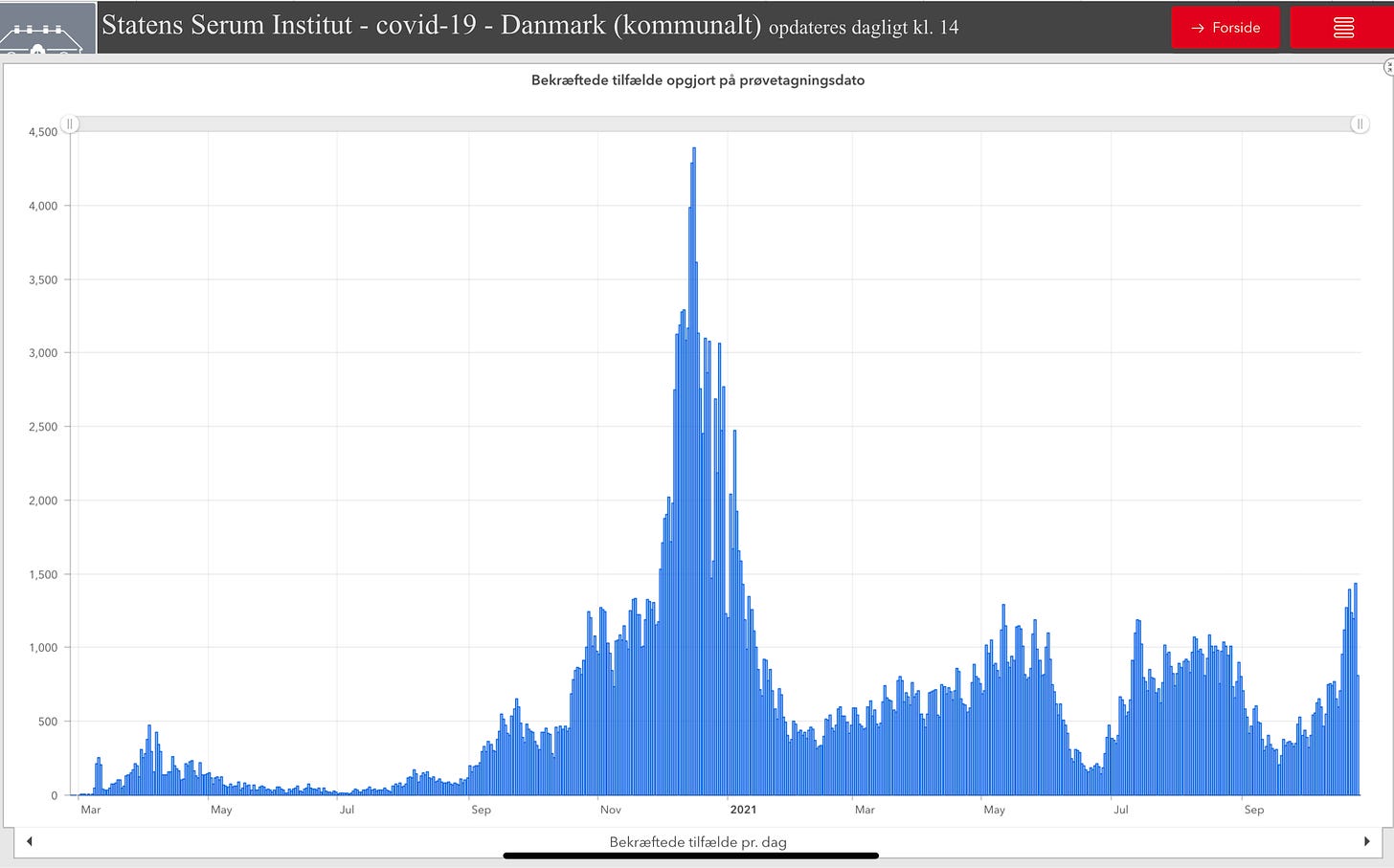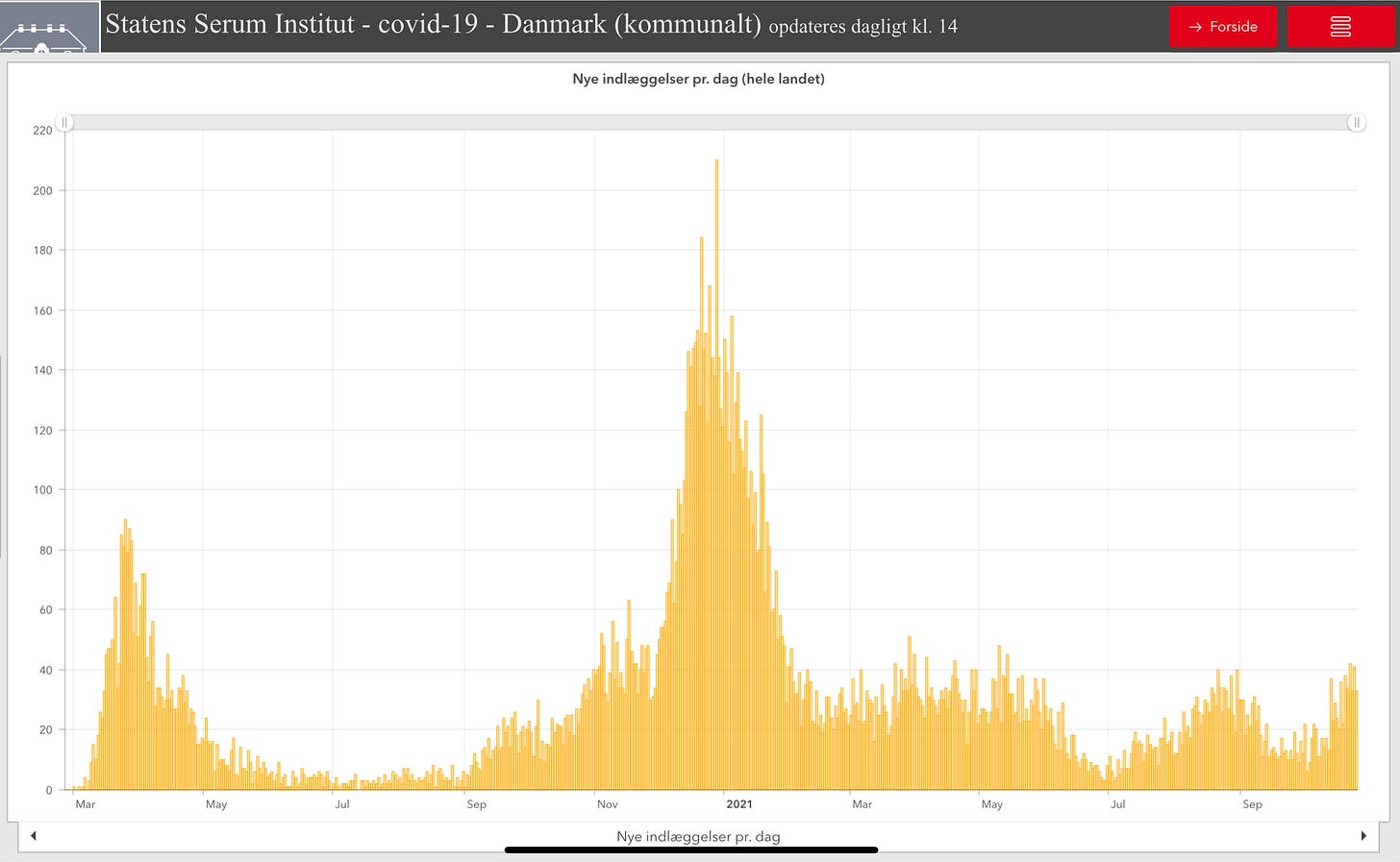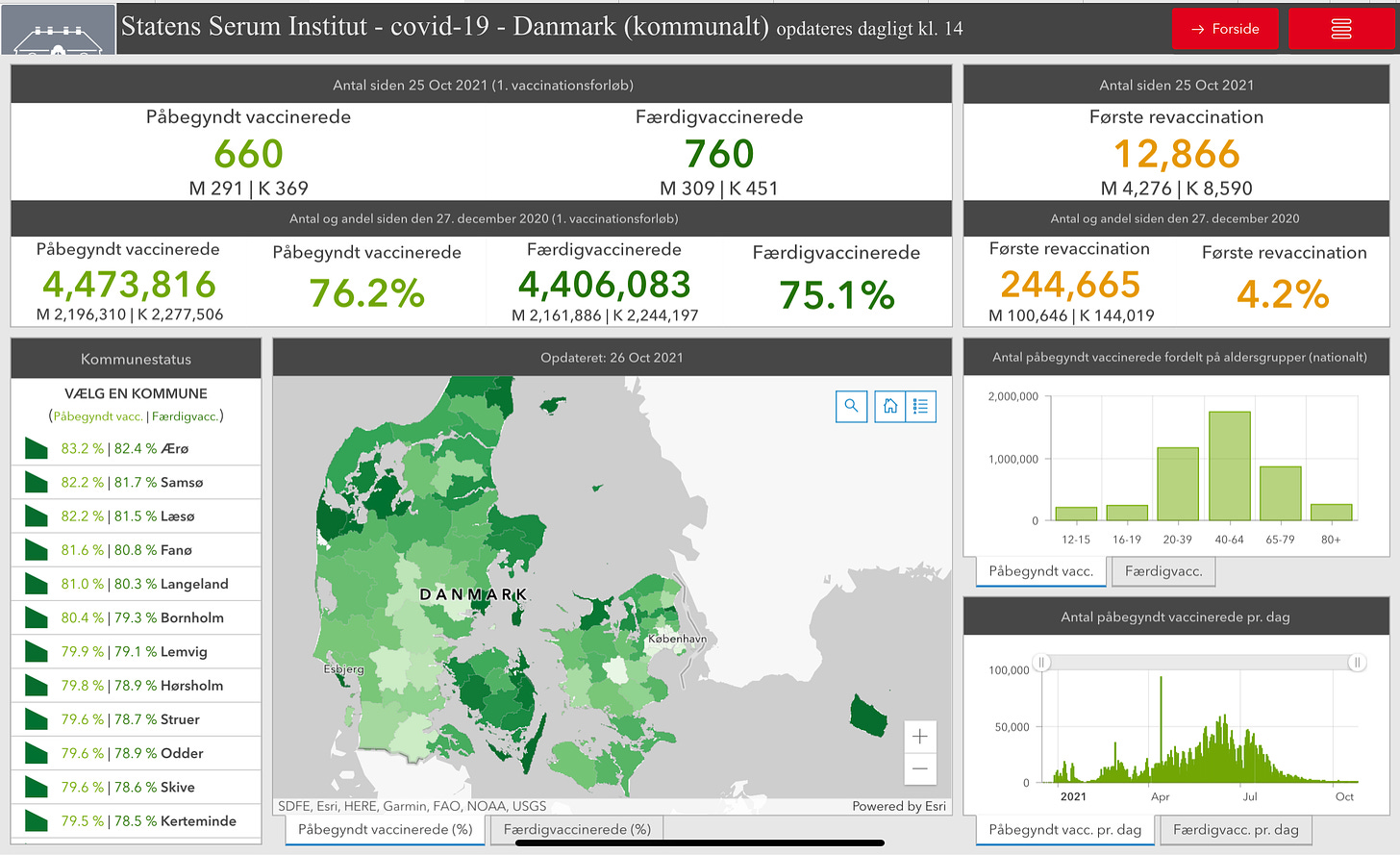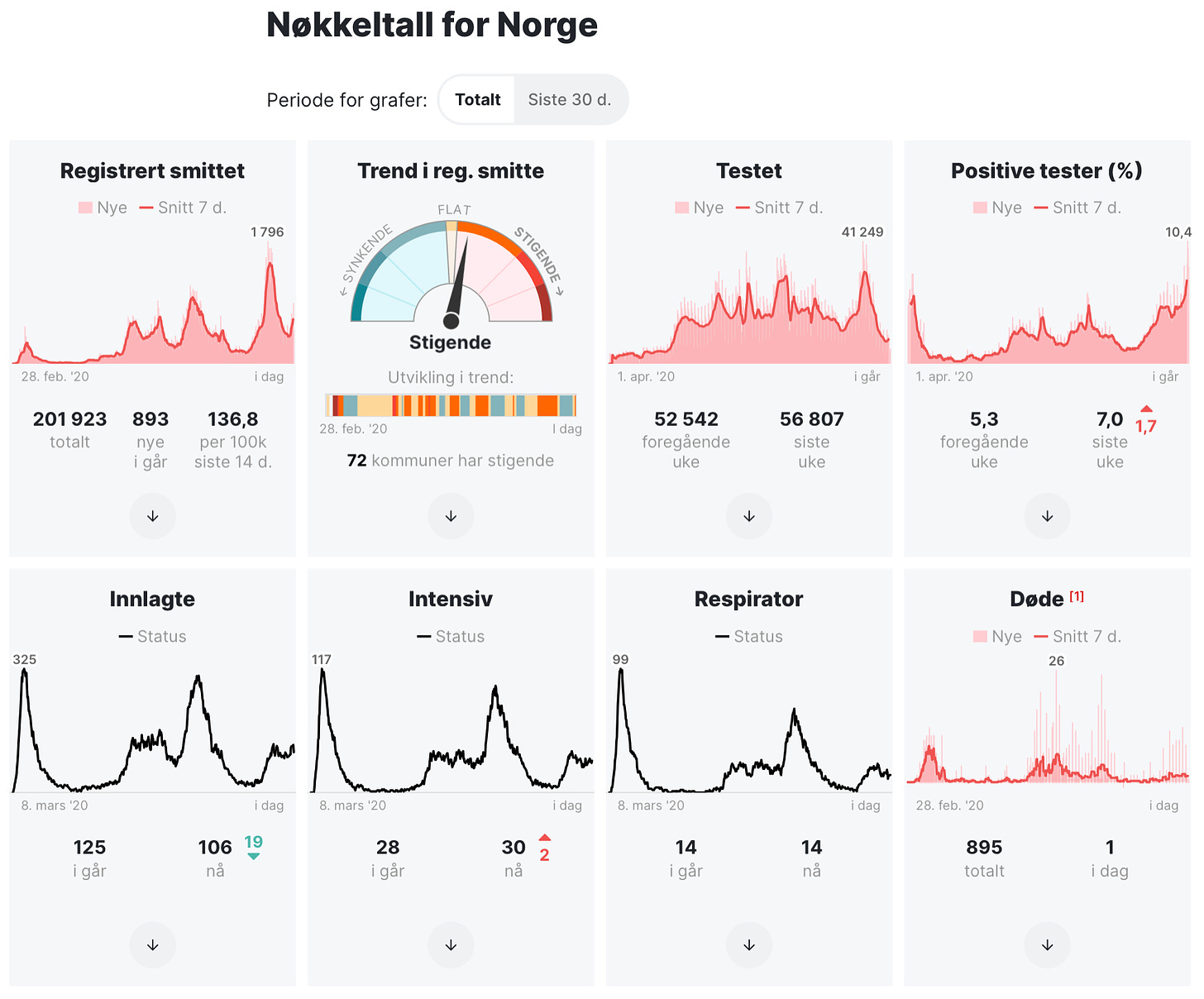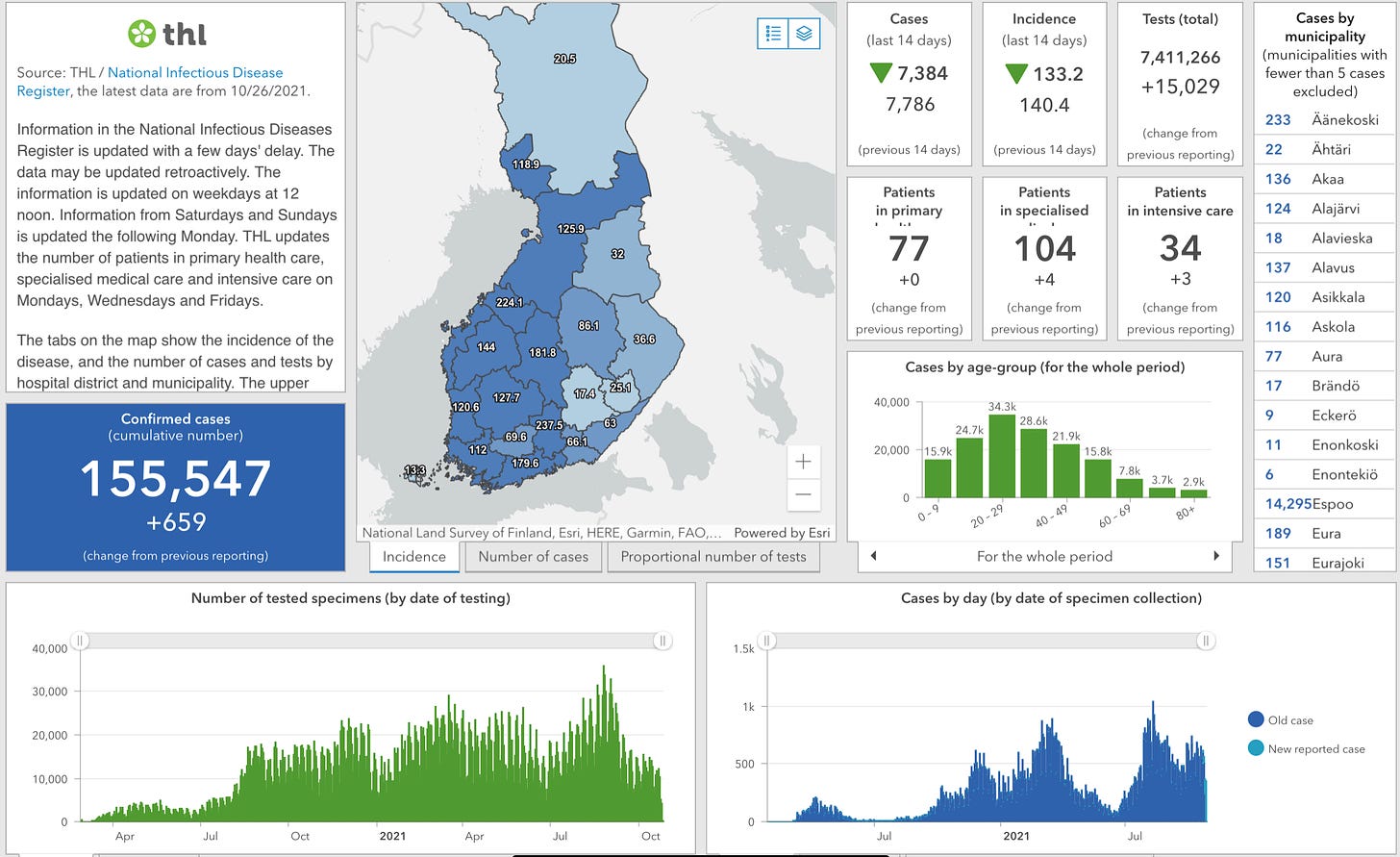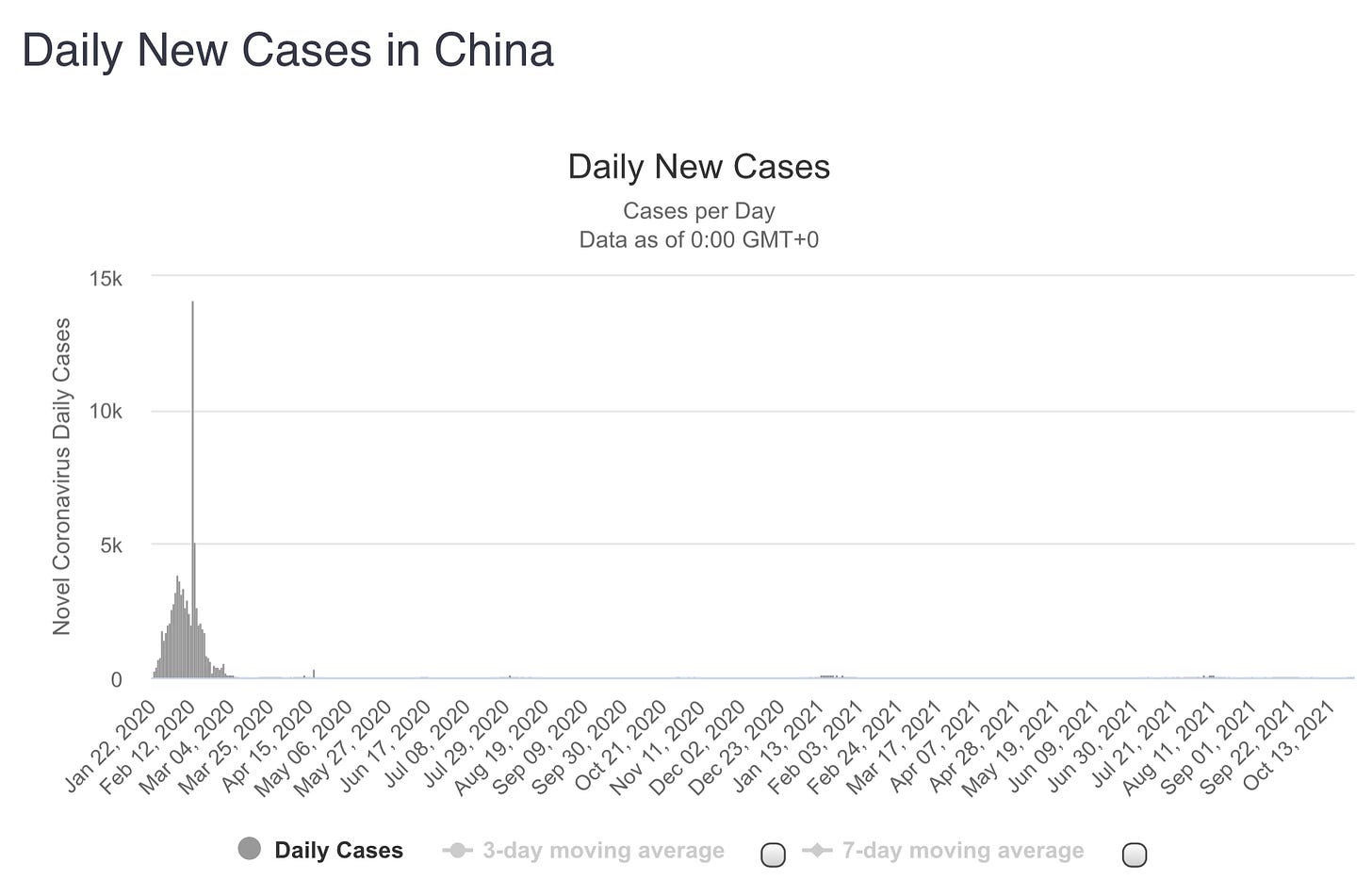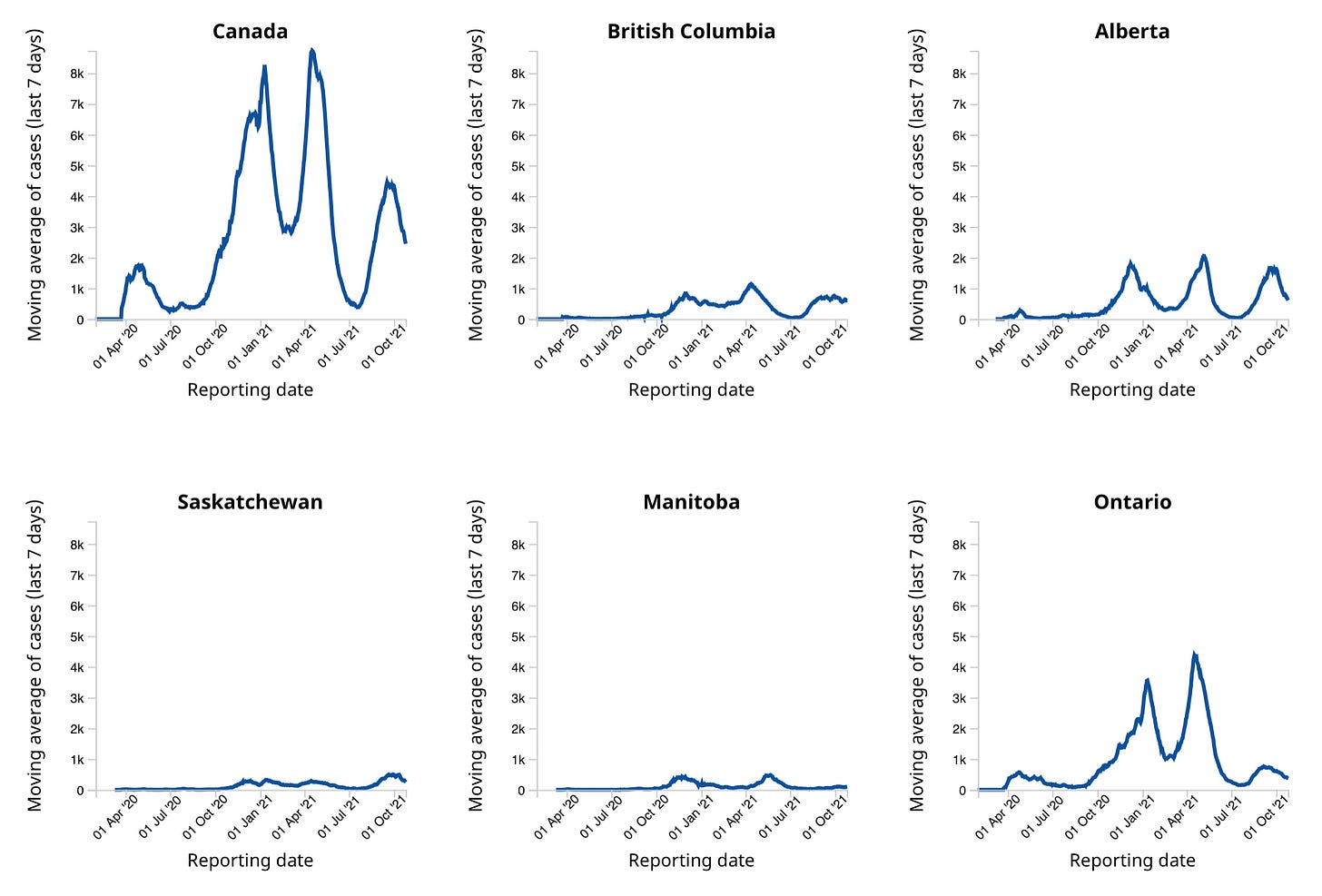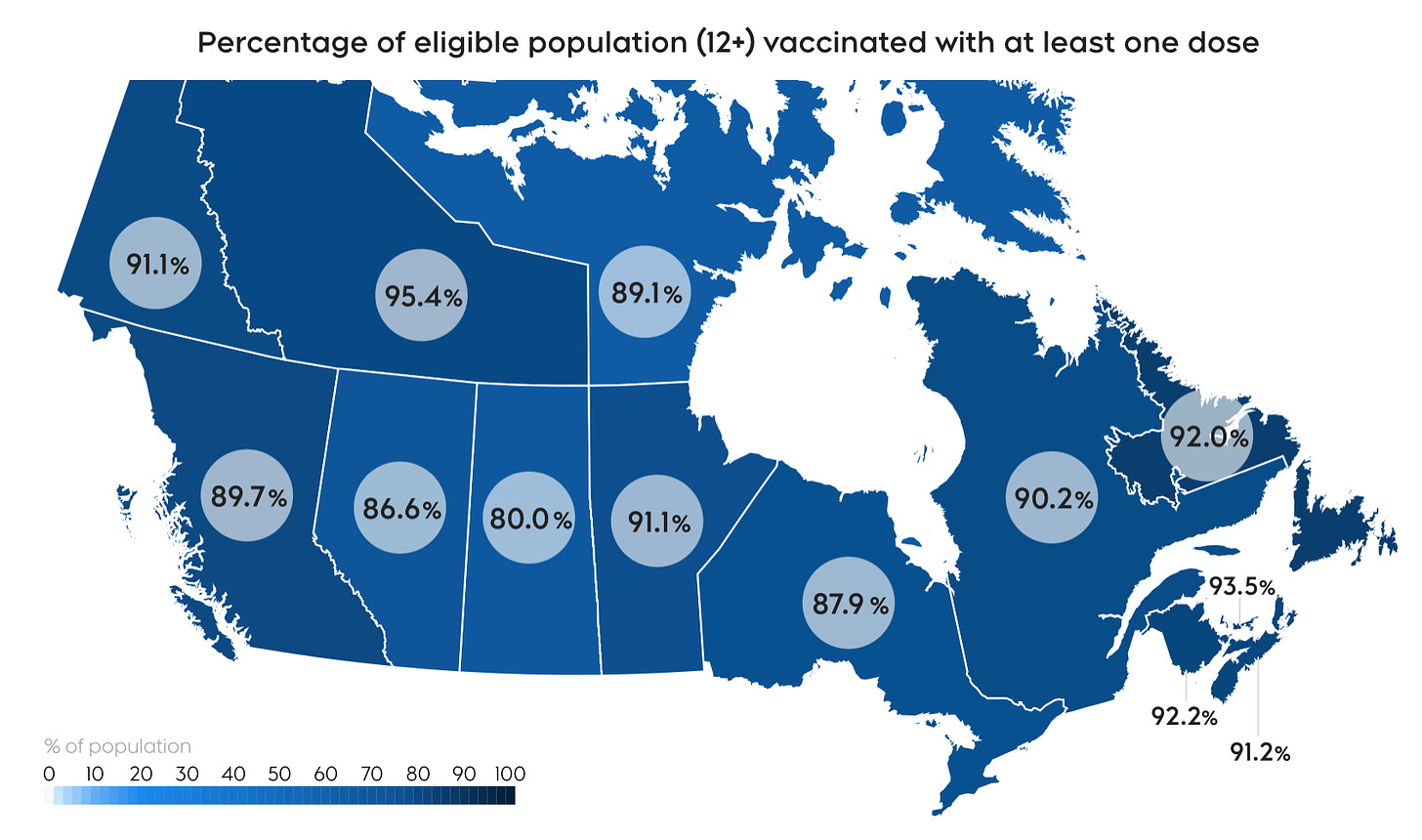🇩🇰
Denmark’s planned return to normal is now showing its first major crack as Health Minister Magnus Heunicke spoke to Ritzau today and warned that if something doesn’t change and more people don’t get vaccinated, then there will be new lockdowns.
“Even though we are at an incredibly high level [of vaccination], especially in relation to many other countries. If we are to keep Denmark open, then we must have more people get vaccinated.”
-
The Danish Agency for Patient Safety says infections are soaring in Tingbjerg Parish in Copenhagen. The agency says the district is seeing a COVID incidence rate “in the last few days” of close to 1,000 per 100,000 residents. Styrelsen for Patientsikkerhed says it is working with the Kommune on infection control measures. It is also encouraging everyone in the district to go get tested.
Copenhagen Kommune, for its part, says it is working with Region Hovedstaden to increase PCR testing capacity in the district. It is also sending text messages to everyone living there to urge them to go get a COVID test.
-
Infection rates are also rising rapidly in the municipality of Ishøj again. The municipality has constantly been among the hardest-hit kommunes in the country for most of the pandemic as it is once again. Ishøj has a coronavirus incidence rate per 100,000 residents of 611. Mayor Ole Bjørstorp has met with the Danish Agency for Patient Safety to try to determine infection control next steps. He is now encouraging all residents of the Kommune to go get tested. Region Hovedstaden is also increasing testing capacity there. The municipality is mulling whether to close schools or take other more severe measures.
-
As COVID numbers rise mayors of municipalities in western Copenhagen are calling for rapid testing to be scaled back up. A few weeks ago, Denmark wound down virtually all of its rapid testing infrastructure.
It is still possible to get a rapid test in some places in Copenhagen, but it costs 175 kroner a pop.
Albertslund Mayor Steen Christiansen spoke to DR.
“We all have an interest in the [COVID] incidence rate being kept down so that our citizens do not get infected. We will again end up in a situation where we have to look at whether we can have everyday life at work, in schools, and day care.”
His call to reintroduce rapid testing is backed up by the mayors of Hvidovre and Ishøj.
However, Health Minister Magnus Heunicke says now is not the time.
“I do not want to reject the idea as it may become relevant at a later date, but here and now we are instead upscaling the PCR testing capacity. Because it is partly safer, and partly because we can keep track of which variants are in Denmark. It is important for us when we assess the epidemic that we also know exactly what kind of variant is in the population.”
-
The number of Danish Kommunes with a COVID incidence rate of over 100 has now risen to 58. Of those, 11 have an incidence rate over 200 and seven are over 300 and four municipalities are over 400.
As you can see in the map below, a good chunk of metro Copenhagen is now dark red and the country as a whole is slipping into deeper shades of orange and red.
-
Denmark’s COVID contact number (reinfection rate or R0) has jumped up to 1.2 after three weeks at 1.0. Health Minister Magnus Heunicke says the increase is “in line with other key figures.” He also adds the national coronavirus incidence rate per 100,000 people has jumped from 90 to 161 in a single week. That is on top of the average daily positivity percentage also hitting 2% as the pandemic situation deteriorates.
Heunicke says 55% of all COVID infections last week were among those who were fully vaccinated. He says this is due “to the fact that they [vaccinated people] make up 75% of the population. Heunicke is also stressing that even fully vaccinated people should get tested if they have symptoms.
-
The number of unvaccinated people being admitted to hospital with a coronavirus infection over the last seven days is more than either those with one dose, or those with two in almost every age group.
The one exception according to data from the Staten Serum Institut are seniors aged 80 years old and older, where admissions of people with one vaccine dose outnumber all others.
-
Denmark is reporting 1,253 COVID infections and four more coronavirus deaths in the last day. There were 1,411 cases reported yesterday. That is now seven days in a row with daily case numbers exceeding 1,000. That hasn’t happened since the Alpha variant wave that shut Denmark down over Christmas and well into 2021.
Yesterday there were 88,457 total corona tests done, of which 65,267 were PCR tests. This equals a positivity percentage of 1.92%.
-
COVID hospitalizations (195) continued to rise (+9) while the number of infected people in an ICU (22) inched upward (+2) and of those the number on a ventilator (11) also increased slightly.
-
On the vaccination front yesterday, the number of 1st (660) and 2nd doses (760) remain very low, while booster shots (12,866) now make up the bulk of daily inoculations.
So far, 76.2% of the total population has one dose and 75.1% are fully vaccinated.
-
COVID restrictions have returned to the Faroe Islands after recording a record-high 99 new infections on Sunday. Schools in some areas have begun to close and students have been sent home. The outbreak seems to be centered in Klaksvik, Eystur, and Fuglafjørður. The Danish Agency for Patient Safety has beefed up its staff in the Faroe Islands in order to ramp up infection detection.
🇸🇪
Sweden has added 3,077 infections and another 16 corona deaths since Thursday.
Total COVID deaths in Sverige now exceed 15,000; that is over five and a half times higher than Denmark and three times that of Danmark, Norway, and Finland combined.
Sweden’s vaccination campaign.
Population 16 years old and older - 7,240,803 1st doses (84.8%) and 6,865,716 2nd vaccine doses (80.4%) have been administered.
For 12-15 year olds - 61,430 vaccinations have been done covering 12% of the age group.
For booster doses among those 80 years old and older - There have been 93,511 inoculations so far (15.2%).
-
The Swedish Public Health Agency is in the process of sending letters to seniors in care and those 80 years old and older about how to get a vaccine booster shot. The agency estimates there are about 100,000 people who qualify. In the case of seniors in care, the 3rd dose vaccination effort is well underway. Seniors can get vaccinated in clinic s or using any of the regions mobile vaccination sites. For those in care, the responsible health authority will inoculate them in their facility.
-
Region Stockholm is seeing increasing coronavirus infections even as hospitalizations ebb slightly. There were 1,486 new corona cases last week, an increase on the 1,143 reported the week before.
Chief Physician Johan Bratt:
“The decline in the number of infections found that we hoped to see has not occurred. Numbers actually increased week to week. It is worrying. The number of hospitalized patients remains at around 80 patients. The emergency hospitals continue to have a strained situation and we want the number of patients with COVID to decrease as quickly as possible. The way to do that is to get more people vaccinated.”
The region’s positivity percentage has increased week to week, going from 4.9% to 6.3%.
The health authority is also revealing there is a backlog in reporting virus deaths in Sweden. It says current reporting is almost two and a half months behind.
🇳🇴
Norway has added 1,038 infections and one more death since yesterday’s update.
COVID hospitalizations (106) are down (-19) while the number of people in an ICU (30) has crept up (+2) and of those the number on a ventilator (14) is unchanged.
To date, 77.90% of Norwegians 12 years old and older have had one vaccine dose and 69.11% have had both.
-
The Norwegian Institute of Public Health has been monitoring the pandemic’s impact among children and has found serious infections resulting in hospitalization are rare. The agency says for children under the age of 18 only 2-3 out of every 1,000 infections have resulted in them being admitted to hospital.
NIPH Researcher Ketil Størdal:
“Our figures show that in the period from March 2020 to October 2021, 160 children and adolescents have been hospitalized due to COVID and associated complications. In comparison, more than 5,200 adults have been admitted. The population under the age of 18 has had the lowest risk of hospitalization throughout the pandemic. This is reassuring data, and clearly show that this virus rarely causes hospitalization of children and adolescents.”
The institute says for children one to 12 years old the proportion of those hospitalized “is very low.” Every third patient among children has been newborns less than 12 months old. The agency thinks this is due to heightened concerns with infants and a lower threshold for being admitted to hospital.
“Children who are admitted stay in hospital for a short time with a median length of stay of two days. This indicates a not very serious case of COVID. Other annual viral infections, such as the RS virus and influenza are a more common reason for hospitalization, more often affect the youngest and result in longer hospital stays.”
The institute also found that the Delta variant hasn’t had an impact on hospitalizations for children indicating it does not hit young people harder than any other strain.
🇫🇮
Finland has registered 659 infections and 11 more virus deaths since yesterday’s update.
COVID hospitalizations (215) are up (+10).
To date, 4,210,465 1st doses (75.1% of the total population) and 3,801,743 2nd vaccine doses (68%) have been administered.
-
This week the Finnish Institute for Health lifted its recommendation that children in grades six and up wear a mask while in class. In making the decision, the agency says the risk of being infected in daycares, schools, and other educational facilities is very low. The recommendation was removed as of Monday.
🇪🇺💉
The European Medicines Agency has authorized the administration of a 3rd dose of the Moderna vaccine for people 18 years old and older. The agency says the Moderna booster dose will be a half a regular dose to be given six to eight months after a second dose. In its decision, the EMA says it found that a booster dose resulted in “a rise in antibody levels in adults whose antibody levels were waning.” It also found the risk of any side effects is no different than taking a second dose. Although it added it will keep a close eye on any reports of myocarditis, a rare side effect causing inflammation of a part of the heart.
-
The EMA has also as of this week begun a rolling review of molnupiravir, a pill found to be a promising treatment for COVID, pioneered by Merck.
🇨🇳
In a move that seems like a flashback to the spring of 2020, China has locked down a Lanzhou, a city with four million residents, due to rising COVID infections. People who live there are being told not to leave their homes unless it is an emergency. A concerted effort is also underway to test every city resident.
Chinese authorities are reporting 43 infections yesterday, all community spread, including a handful of cases in Lanzhou.
I would advise caution on taking China’s COVID reporting at face value.
🇨🇦
Canada reported 1,842 infections yesterday and the virus claimed another 56 lives as total pandemic deaths approached 30,000.
Overall, the infection curve is bending back down both nationally and among the provinces and territories.
The Canadian vaccination effort has so far administered 29,658,443 1st vaccine doses (77.57% of the total population) while 28,043,228 people (73.34%) are fully vaccinated.
In Ontario today 595 infections in the last 48 hours. Of those, 407 are among people who are unvaccinated or who have a single dose. 233 people are in hospital, of which 203 are not fully vaccinated or not vaccinated at all. Of the 138 people in an ICU, that number is 121.
Quebec reported 340 infections and four more fatalities today.
In Atlantic Canada, New Brunswick has 22 new infections and three more deaths. Newfoundland and Labrador had 36. Nova Scotia saw 57 cases over the weekend.
Manitoba saw 407 infections and two more corona deaths since its Friday update.
There were 170 new infections in Saskatchewan today, the lowest number in two months. The province continues to transfer patients out of province, to relieve pressure on its strained hospitals.
Alberta logged 1,592 infections and another 25 deaths over a three day period covering numbers from Saturday to Monday. There are 821 people in hospital of which 71.7% are partially vaccinated or not vaccinated at all. Of the 182 in an ICU that number is 87.3%.
B.C. registered 1,618 infections and 20 corona deaths yesterday in numbers that cover three days since its last update on Friday. There are 336 people in hospital and 149 in an ICU.




